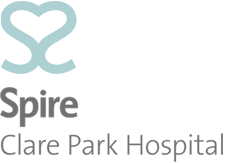Cyst Removal
Cysts are fluid-filled sacs found within the body which can be visible when they form near the surface of the skin. Location and the composition of the membrane lining differentiates one type of cyst from another. There are three types of cysts found in the skin that are considered common. These include the epidermal (sebaceous) cyst, trichilemmal (pilar) cyst, and milium. There are also less common cysts.
Cysts typically do not hurt, but may become inflamed or infected. A sign your cyst is infected may be that it leaks pus. Either way, any unexplained lump or bump that develops on your skin should be looked at by a GP for proper diagnosis.
Cysts usually resolve themselves over a matter of weeks, but removal may be appropriate if they are in a position that rubs on your body/clothes, or they are situated somewhere like the face, for aesthetic reasons. Your may be prescribed antibiotics to combat any infection if necessary. Removal almost always involves making a small incision, which will leave a small, temporary scar.
You should on no account attempt to burst your own cyst, as this may cause more complications than simply leaving it alone would.
The three kinds of cyst are:
An epidermal cyst is a freely movable nodule with essentially normal overlying skin. It is one of the most common benign skin tumors. The cyst wall is made of true epidermis (the outermost part of the skin). The most common locations include the face, ears, neck, back and scalp. A central pore may be seen. The cyst contains a whitish pus, which is broken down keratin (a major component of skin). Epidermal cysts may arise when the hair follicle is clogged, such as in severe acne, or from a penetrating injury.
Trichilemmal cysts (wens) appear very similar to epidermal cysts, however, they mainly occur on the scalp and usually come in multiples. The wall is thicker thus tends to be removed more easily in one solid piece. This contrasts to the epidermal cyst that often can rupture into pieces while removal is being performed. If any piece of the cyst is left behind, the cyst likely will recur. Trichilemmal and epidermal cysts can be removed if they become bothersome.
Milia are usually found on the face, most notably around the eyes. They are small firm whitish lesions. They usually arise without any specific cause but several diseases and dermatologic treatments can trigger their development. They are also very common on the faces of newborns and infants. Adult patients may request the milia be treated for cosmetic purposes. The lesions are not treated in infants, as they will resolve on their own in a few weeks to months.


